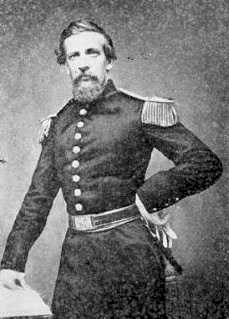|
2nd Missouri Infantry Regiment (Confederate)
The 2nd Missouri Infantry Regiment was an infantry regiment that served in the Confederate States Army during the American Civil War. Organized on January 16, 1862, the regiment first saw major action at the Battle of Pea Ridge on March 7 and 8, 1862. After Pea Ridge, the regiment was transferred across the Mississippi River, fighting in the Battle of Farmington, Mississippi on May 9. The unit missed the Battle of Iuka in September, but was heavily engaged at the Second Battle of Corinth on October 3 and 4. The regiment helped drive in a Union Army, Union position on October 3. On October 4, the 2nd Missouri Infantry, along with the rest of Colonel (United States), Colonel Elijah Gates' brigade, captured a fortification known as Battery Powell, but were forced to retreat by Union reinforcements. On May 16, 1863, the regiment was part of a major attack at the Battle of Champion Hill. The attack was repulsed, and the regiment was rout, routed at the Battle of Big Black River ... [...More Info...] [...Related Items...] OR: [Wikipedia] [Google] [Baidu] |
Infantry
Infantry is a military specialization which engages in ground combat on foot. Infantry generally consists of light infantry, mountain infantry, motorized infantry & mechanized infantry, airborne infantry, air assault infantry, and marine infantry. Although disused in modern times, heavy infantry also commonly made up the bulk of many historic armies. Infantry, cavalry, and artillery have traditionally made up the core of the combat arms professions of various armies, with the infantry almost always comprising the largest portion of these forces. Etymology and terminology In English, use of the term ''infantry'' began about the 1570s, describing soldiers who march and fight on foot. The word derives from Middle French ''infanterie'', from older Italian (also Spanish) ''infanteria'' (foot soldiers too inexperienced for cavalry), from Latin '' īnfāns'' (without speech, newborn, foolish), from which English also gets '' infant''. The individual-soldier term ''infantry ... [...More Info...] [...Related Items...] OR: [Wikipedia] [Google] [Baidu] |
Mining (military)
Tunnel warfare involves war being conducted in tunnel and other underground cavities. It often includes the construction of underground facilities (mining or undermining) in order to attack or defend, and the use of existing natural caves and artificial underground facilities for military purposes. Tunnels can be used to undermine fortifications and slip into enemy territory for a surprise attack, while it can strengthen a defense by creating the possibility of ambush, counterattack and the ability to transfer troops from one portion of the battleground to another unseen and protected. Also, tunnels can serve as shelter from enemy attack. Since antiquity, sappers have used mining against walled cites, fortresses, castles or other strongly held and fortified military positions. Defenders have dug counter-mines to attack miners or destroy a mine threatening their fortifications. Since tunnels are commonplace in urban areas, tunnel warfare is often a feature, though usually a min ... [...More Info...] [...Related Items...] OR: [Wikipedia] [Google] [Baidu] |
1st Missouri Infantry Regiment (Confederate)
The 1st Missouri Infantry was an infantry regiment that served in the Confederate States Army during the American Civil War. Originally commanded by Colonel John S. Bowen, the regiment fought at the Battle of Shiloh, where it was engaged near the Peach Orchard on April 6, 1862. On April 7, during the Union counterattacks at Shiloh, the regiment was instrumental in preventing the Washington Artillery from being captured. The regiment was next engaged at the Second Battle of Corinth, where it outflanked several Union positions. On the second day at Corinth, the regiment was only minimally engaged. On November 7, the 1st Missouri Infantry was combined with the 4th Missouri Infantry to form the 1st and 4th Missouri Infantry (Consolidated), as a result of heavy battle losses in both regiments. Organization The regiment was the first Missouri unit to officially enter the Confederate States Army. After recruiting efforts by Colonel John S. Bowen, who had been captured duri ... [...More Info...] [...Related Items...] OR: [Wikipedia] [Google] [Baidu] |
Missouri State Guard
The Missouri State Guard (MSG) was a military force established by the Missouri General Assembly on May 11, 1861. While not a formation of the Confederate States Army, the Missouri State Guard fought alongside Confederate troops and, at various times, served under Confederate officers. Background The Missouri General Assembly passed the "Military Bill" on May 11, 1861, in direct response to the Camp Jackson Affair in St. Louis the previous day. The final version of the act approved on May 14 authorized the Governor of Missouri, Claiborne Fox Jackson, to disband the old Missouri Volunteer Militia and reform it as the Missouri State Guard to resist a feared invasion by the Union Army. It also outlawed or prohibited other militia organizations except those authorized by the Guard's district commanders. This was primarily aimed at preventing Unionist Missourians from organizing "Home Guard" companies in the areas outside the metropolitan St. Louis area. This prohibition included t ... [...More Info...] [...Related Items...] OR: [Wikipedia] [Google] [Baidu] |


.jpg)
